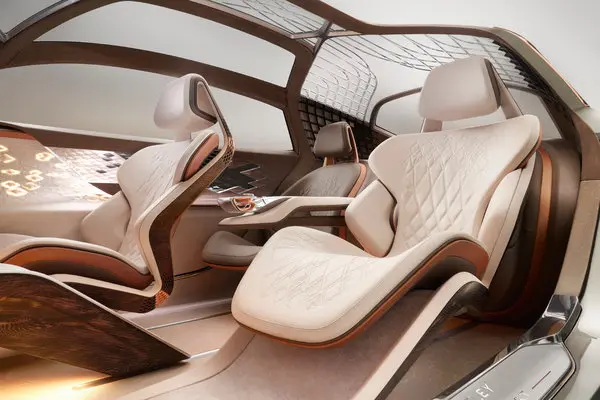Innovation in automotive manufacturing has gone beyond traditional materials like steel and aluminum. Today, automakers are experimenting with unconventional materials like bamboo, plastic, wood, and even hemp to create unique, sustainable, and high-performance vehicles. These materials enhance functionality, reduce environmental impact, and offer groundbreaking designs. In this article, we explore five remarkable cars made with these innovative materials, highlighting their significance and the future of automotive design.
Importance of Innovative Materials in Car Manufacturing
In automotive engineering, the choice of materials plays a crucial role in determining a car’s weight, durability, fuel efficiency, and overall performance. Traditional materials like steel and aluminum, while reliable, have limitations in terms of weight and sustainability. The growing emphasis on eco-friendliness and the demand for lightweight vehicles have pushed manufacturers to explore alternatives.
Using unique materials like bamboo, carbon-fiber-reinforced plastic (CFRP), hemp, and recycled components contributes to sustainability by reducing environmental impact. These materials not only enhance performance but also pave the way for a circular economy, where resources are reused, and waste is minimized. Automakers are embracing these trends, recognizing that innovative materials can revolutionize car manufacturing and design.
The Five Cars Made with Unique Materials
Toyota Setsuna Concept: Bamboo-Based Car
The Toyota Setsuna Concept is a revolutionary car that uses bamboo and other wood materials for its body panels and interior. Bamboo is lightweight, renewable, and biodegradable, making it an eco-friendly choice for car manufacturing. The Setsuna’s design emphasizes the passage of time, symbolizing how families can pass the car down through generations.
Key Features:
- Lightweight bamboo panels enhance fuel efficiency.
- Natural aesthetics create a warm, timeless look.
- Fully biodegradable construction minimizes environmental impact.
The Setsuna Concept demonstrates how renewable materials like bamboo can replace traditional options, blending functionality with sustainability.
BMW i3: Plastic Car
The BMW i3 stands out for its extensive use of carbon-fiber-reinforced plastic (CFRP) in its body structure. CFRP is a lightweight yet incredibly strong material that significantly reduces the vehicle’s weight while maintaining durability. This innovation allows the BMW i3 to achieve impressive fuel efficiency and high performance.
Key Features:
- Strong and lightweight CFRP body.
- Corrosion-resistant material ensures longevity.
- Enhanced driving dynamics due to reduced weight.
The BMW i3 is a prime example of how plastic materials can revolutionize the structural design of cars, contributing to both sustainability and performance.
Ford Model T (Hemp Version): Plant-Based Car
Henry Ford’s hemp-based version of the Model T was a groundbreaking experiment in using plant fibers for car manufacturing. The car’s body panels were made from hemp fibers, a renewable and biodegradable material known for its strength and lightness. Although this version of the Model T didn’t enter mass production, it highlighted the potential of plant-based materials.
Key Features:
- Hemp fibers are lightweight, durable, and eco-friendly.
- Panels were ten times stronger than steel but much lighter.
- Low energy consumption during production.
This early innovation paved the way for modern exploration of renewable materials in automotive design.

Nissan Leaf (2018 Version): Recycled Materials Car
The Nissan Leaf incorporates recycled plastics and bio-based materials into its design, especially in its interior. The seats and carpets are made from recycled PET bottles, while dashboard components use bio-fibers. This approach makes the Leaf one of the most eco-friendly mass-market electric vehicles.
Key Features:
- Seats and carpets made from recycled PET bottles.
- Bio-based fibers reduce reliance on petroleum-based plastics.
- Maintains high durability and aesthetics.
The Nissan Leaf showcases how mainstream car manufacturers can incorporate sustainable materials without compromising performance or affordability.
Morgan Plus 4: Wood-Based Car
The Morgan Plus 4 features an ash wood frame, a tradition that Morgan Motor Company has maintained for decades. Ash wood is strong, lightweight, and naturally flexible, making it an ideal choice for the car’s frame. This combination of craftsmanship and engineering results in a vehicle that is both elegant and functional.
Key Features:
- Ash wood frame provides structural integrity and flexibility.
- Unique design appeals to automotive enthusiasts.
- Wood-based construction reduces carbon footprint.
The Morgan Plus 4 is a testament to the blend of traditional craftsmanship and modern automotive engineering, offering a timeless and sustainable design.
Benefits and Challenges of Using Unique Materials
Benefits:
- Weight Reduction: Lightweight materials improve fuel efficiency and handling.
- Eco-Friendliness: Sustainable materials reduce reliance on non-renewable resources and minimize waste.
- Innovative Designs: Unique materials allow for creative and differentiated designs that appeal to consumers.
Challenges:
- Cost: Sourcing and manufacturing unconventional materials can be expensive.
- Durability: Some materials, like bamboo and hemp, may face durability concerns in harsh conditions.
- Adoption: Consumers and manufacturers may hesitate to adopt new materials due to lack of familiarity.
The Future of Unique Materials in Car Manufacturing
As technology advances, the automotive industry is likely to see more innovative materials being integrated into mainstream production. Nanomaterials, algae-based components, and 3D-printed parts are emerging as potential game-changers. Automakers are also partnering with sustainable material innovators to enhance their offerings.
Consumer demand for eco-conscious vehicles is a driving force behind these innovations. With increasing awareness of environmental issues, buyers are prioritizing cars that combine performance with sustainability. The future of car manufacturing lies in the balance between cutting-edge materials and practicality.
Conclusion
From bamboo to recycled plastics, unique materials are transforming the automotive industry. Cars like the Toyota Setsuna, BMW i3, and Morgan Plus 4 demonstrate how these materials contribute to sustainability, performance, and innovation. As the demand for eco-friendly vehicles grows, manufacturers will continue exploring unconventional materials to meet consumer expectations while minimizing environmental impact. The journey toward a greener and more innovative automotive future has just begun.

 The Real Cost of Anime Car Wraps: What You Need to Know Before Going Full Itasha
The Real Cost of Anime Car Wraps: What You Need to Know Before Going Full Itasha  The Importance of Quiet Generators for Peaceful Sleep: Featuring the Jackery Solar Generator 2000 Plus
The Importance of Quiet Generators for Peaceful Sleep: Featuring the Jackery Solar Generator 2000 Plus  Why WEX Motorpass Is the Smart Choice for Business Fuel Management
Why WEX Motorpass Is the Smart Choice for Business Fuel Management  Top Choice for 4WD and Overlanding Rentals in Bozeman
Top Choice for 4WD and Overlanding Rentals in Bozeman  How Car Window Tinting Enhances Privacy and Protection on the Road
How Car Window Tinting Enhances Privacy and Protection on the Road  Certified Preowned Cars: Are They Worth It?
Certified Preowned Cars: Are They Worth It?  Apps That Help Diagnose Car Problems Like a Mechanic
Apps That Help Diagnose Car Problems Like a Mechanic  How to Track Fuel Efficiency and Expenses Using Smart Apps
How to Track Fuel Efficiency and Expenses Using Smart Apps  The Top 10 Car Maintenance Apps Every Driver Needs
The Top 10 Car Maintenance Apps Every Driver Needs 